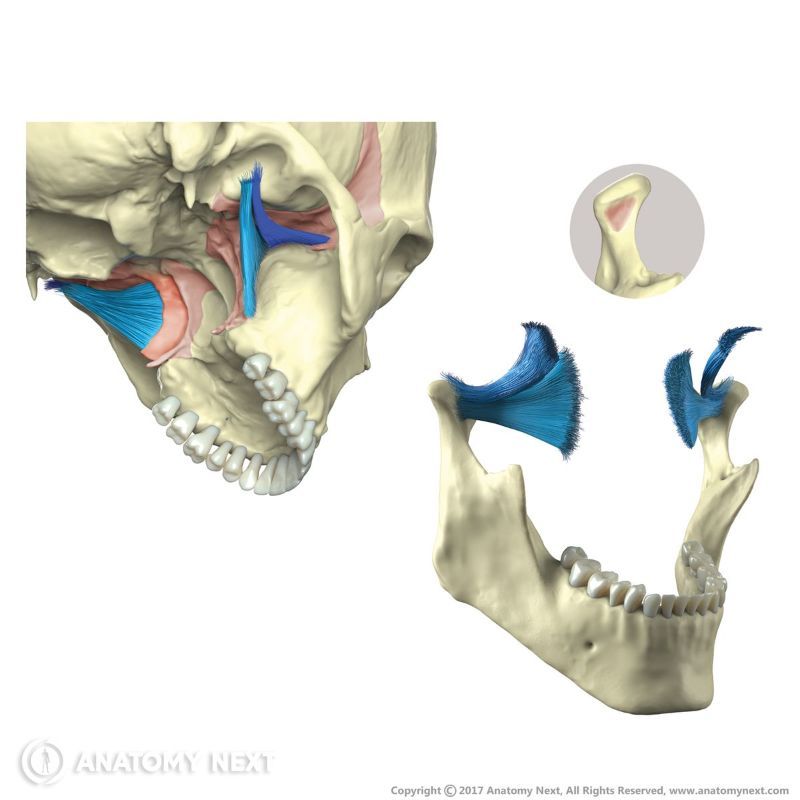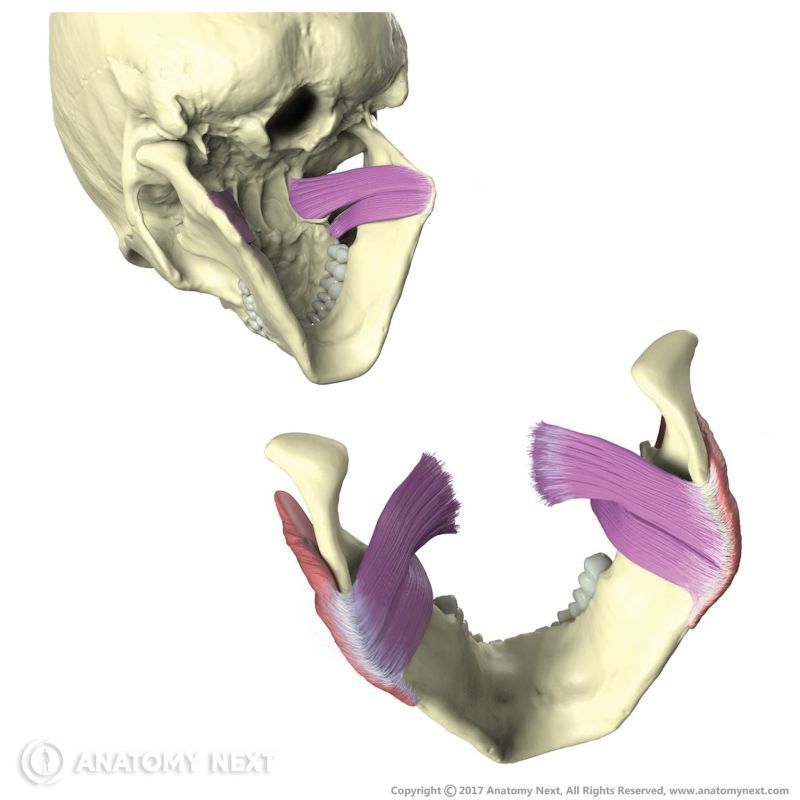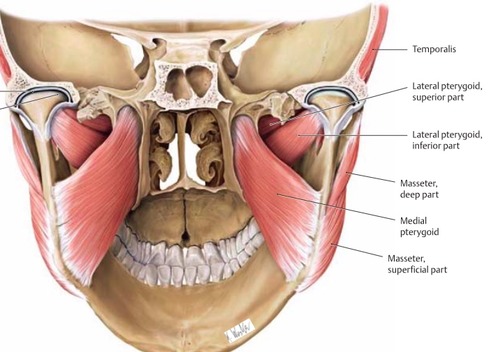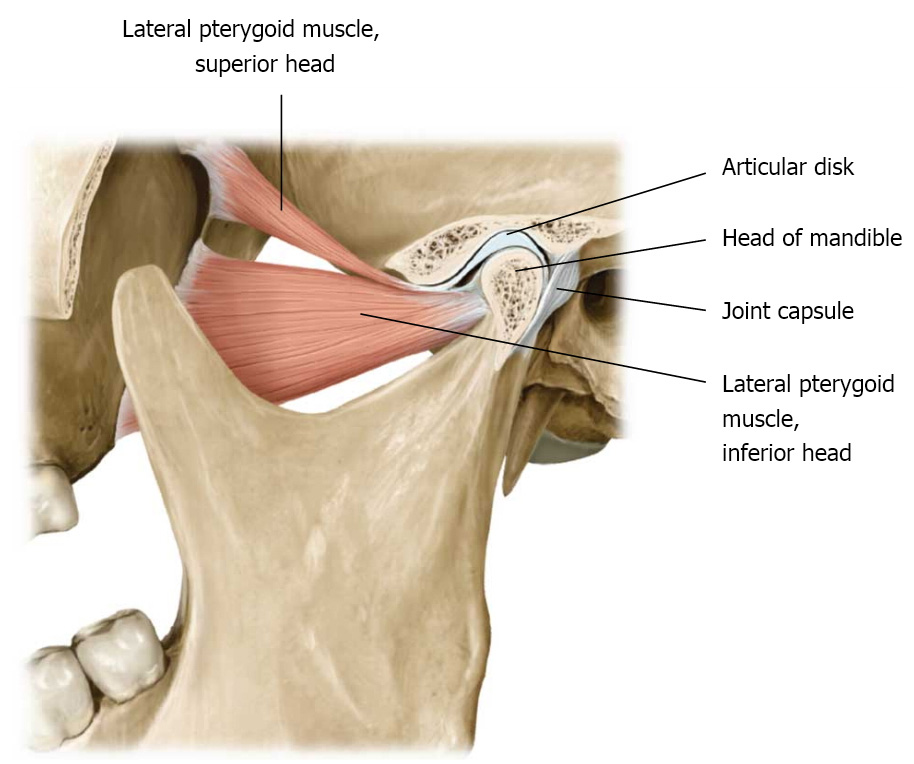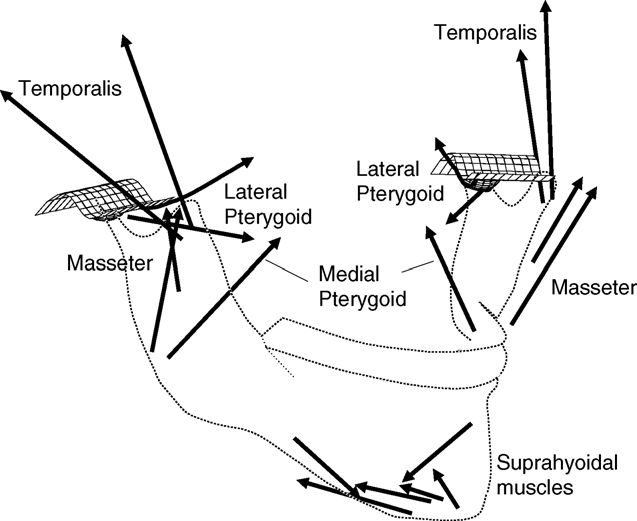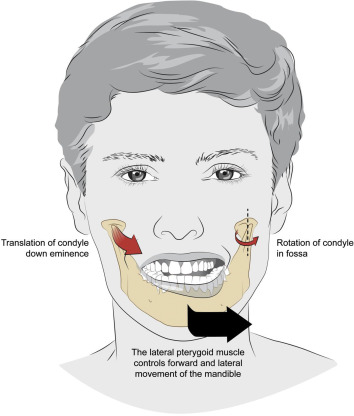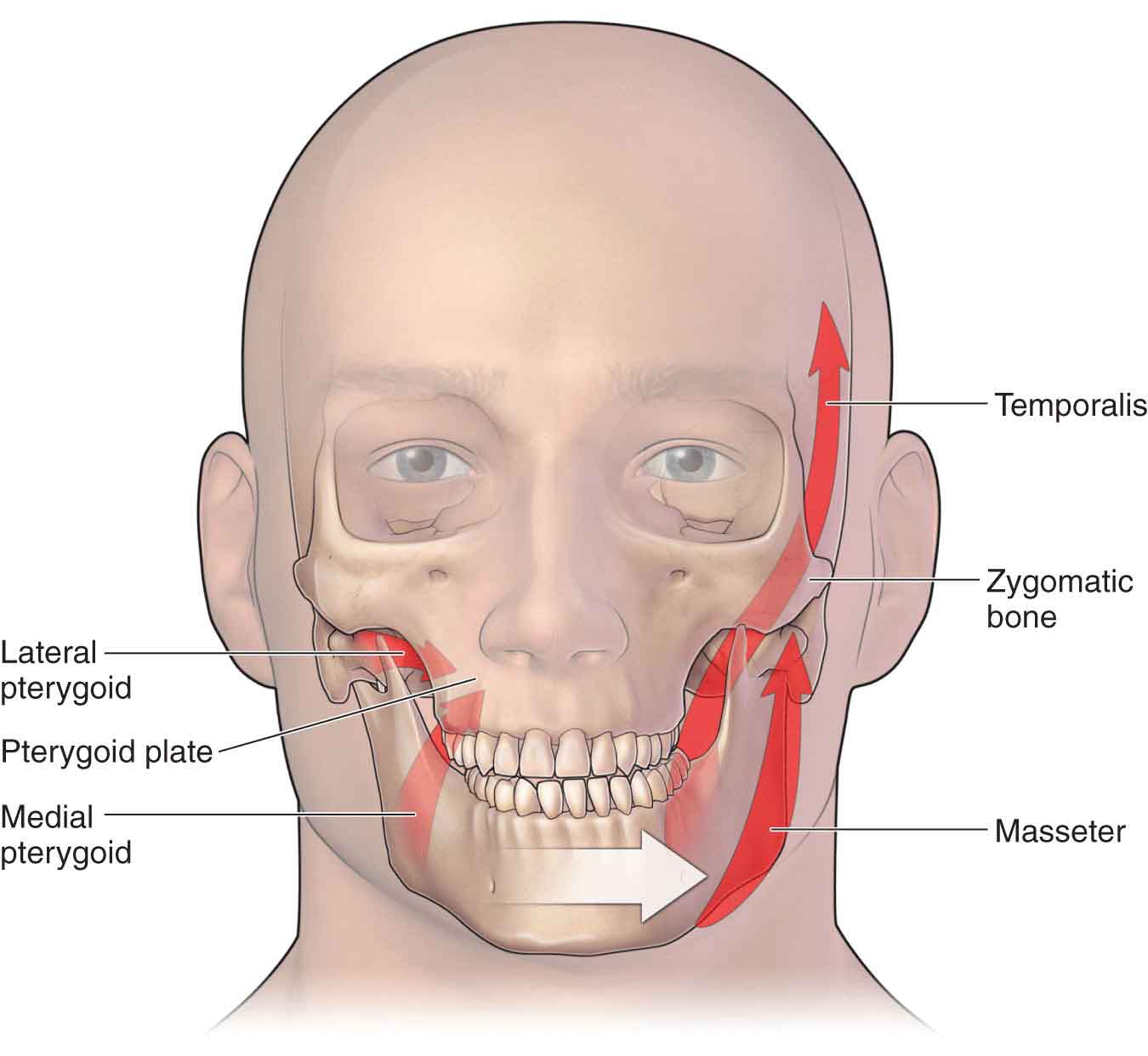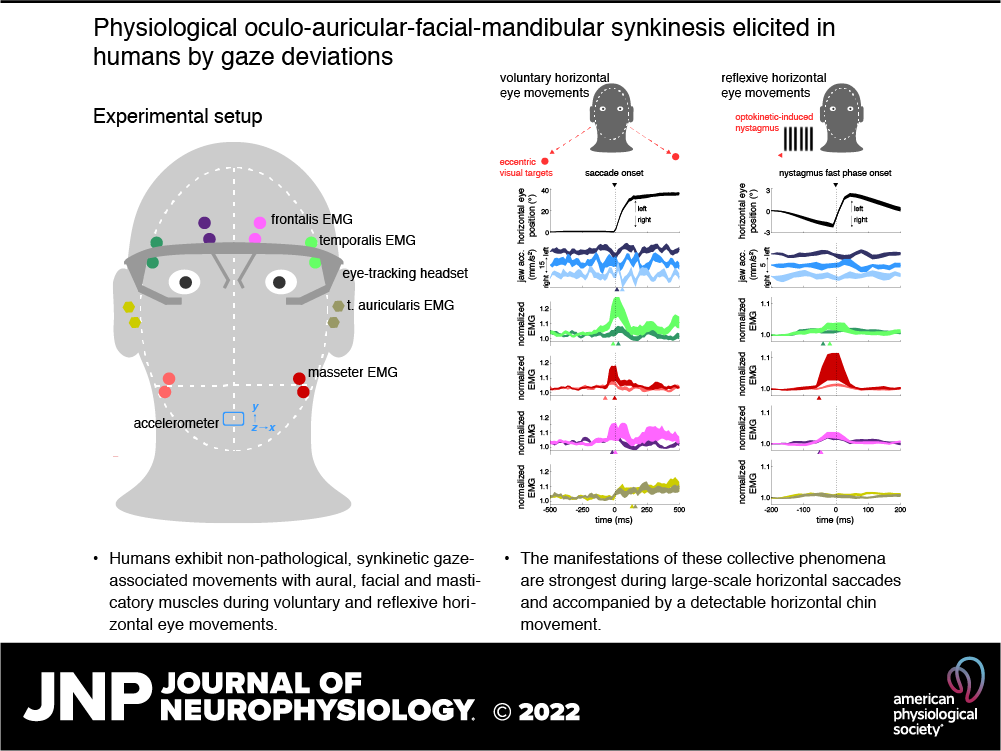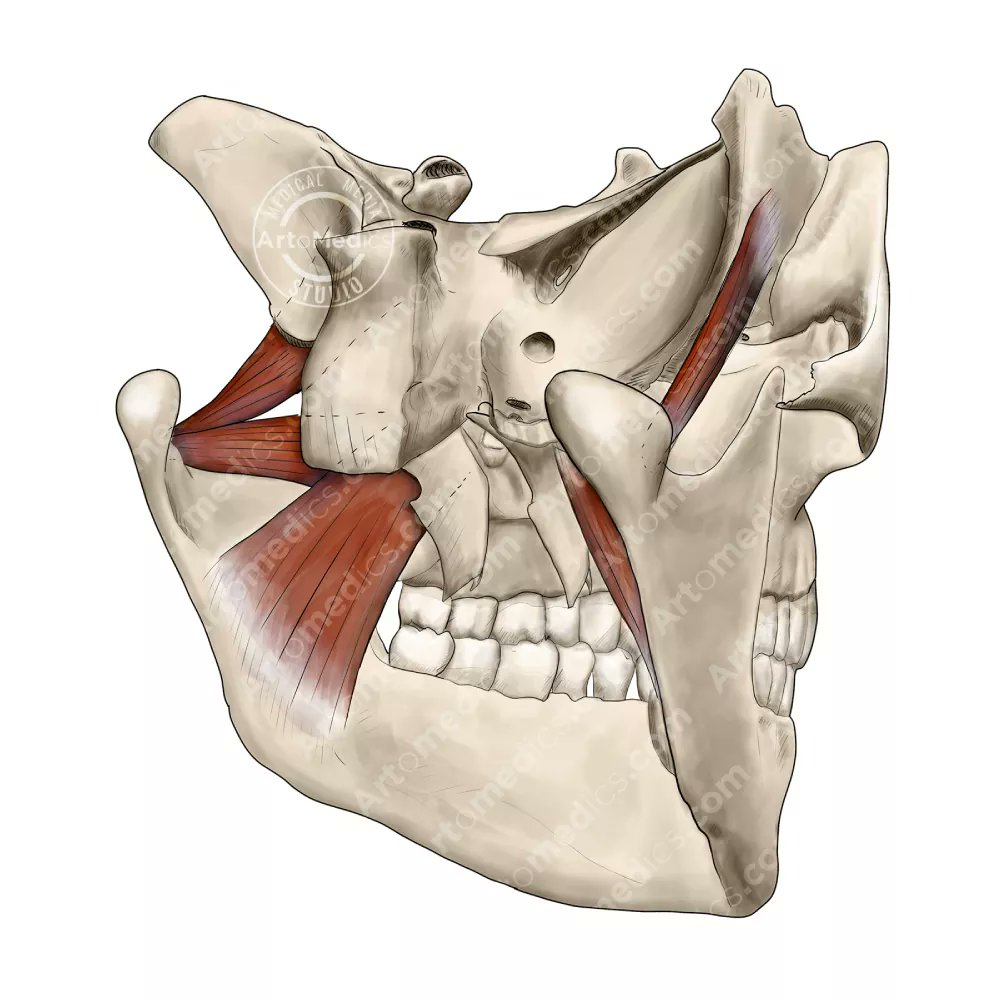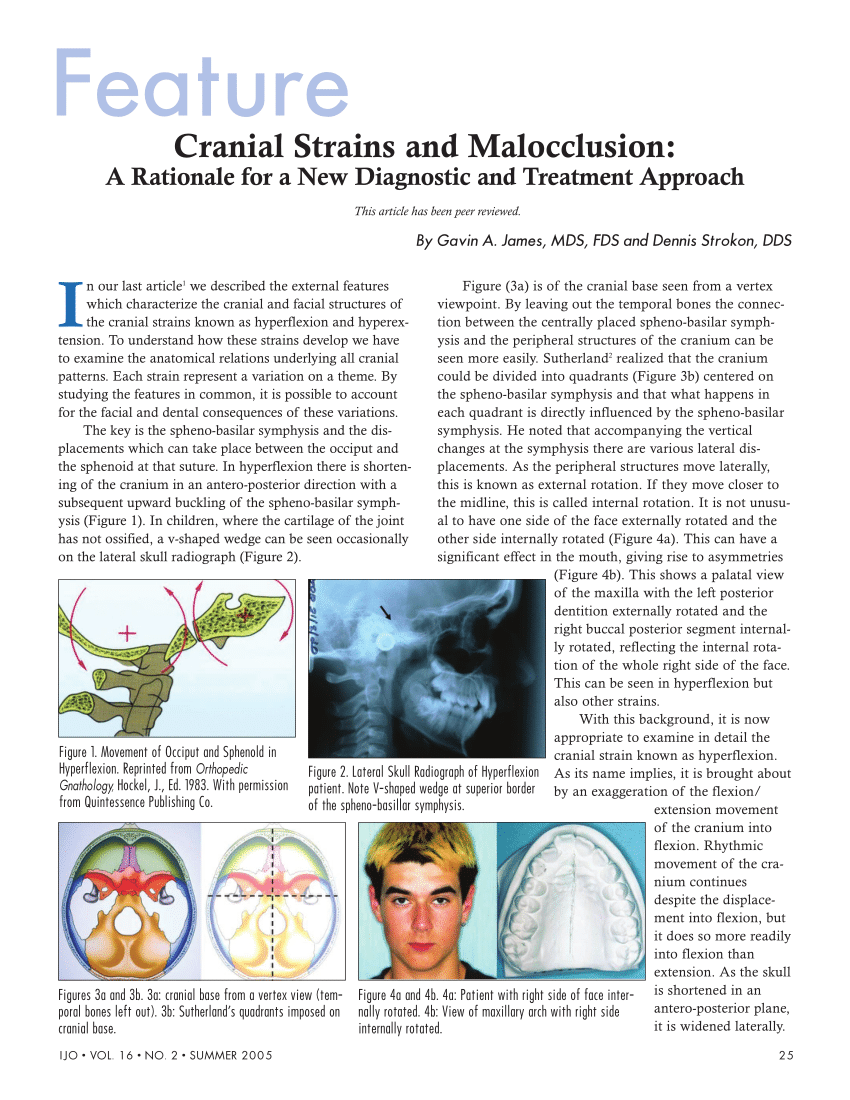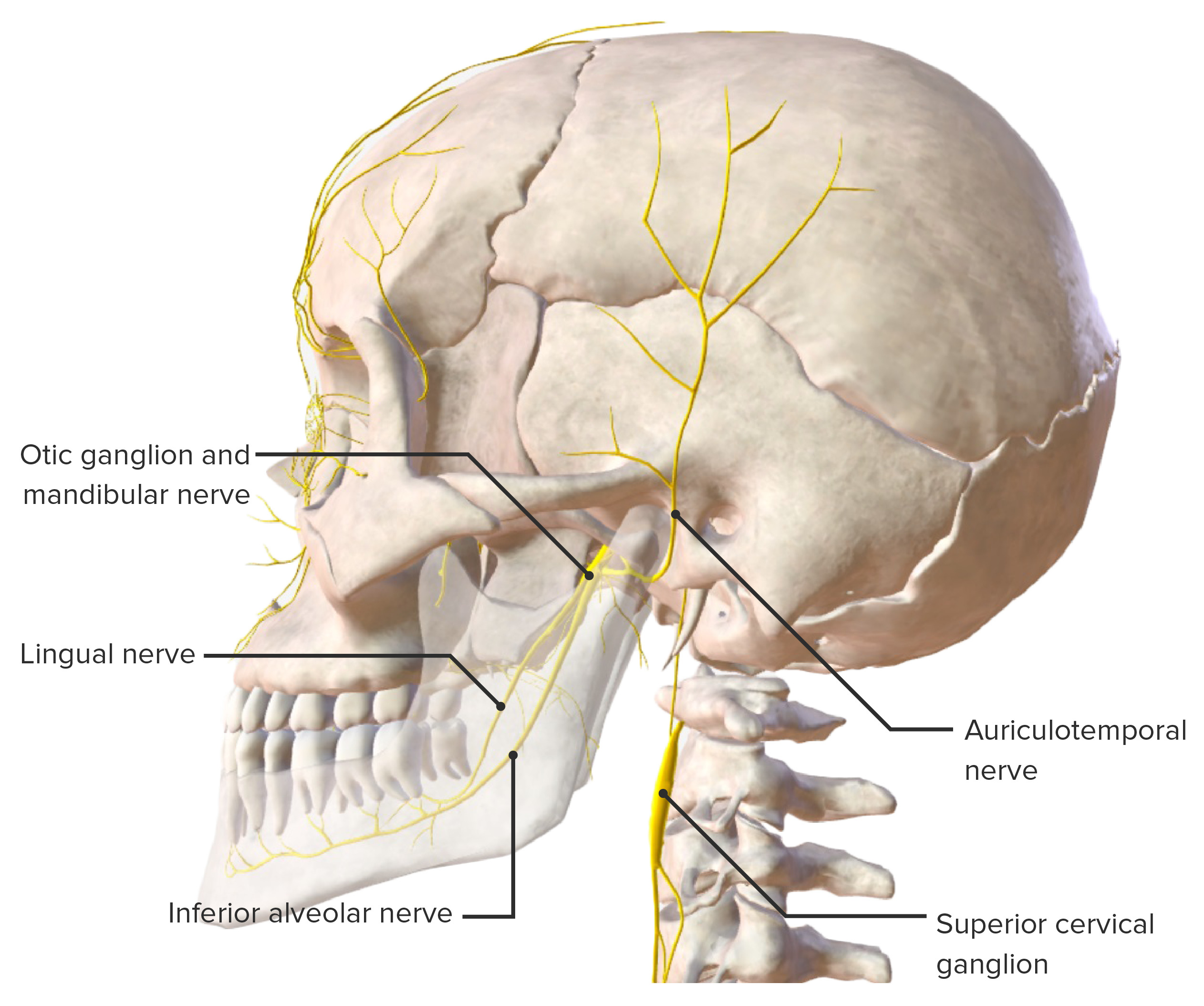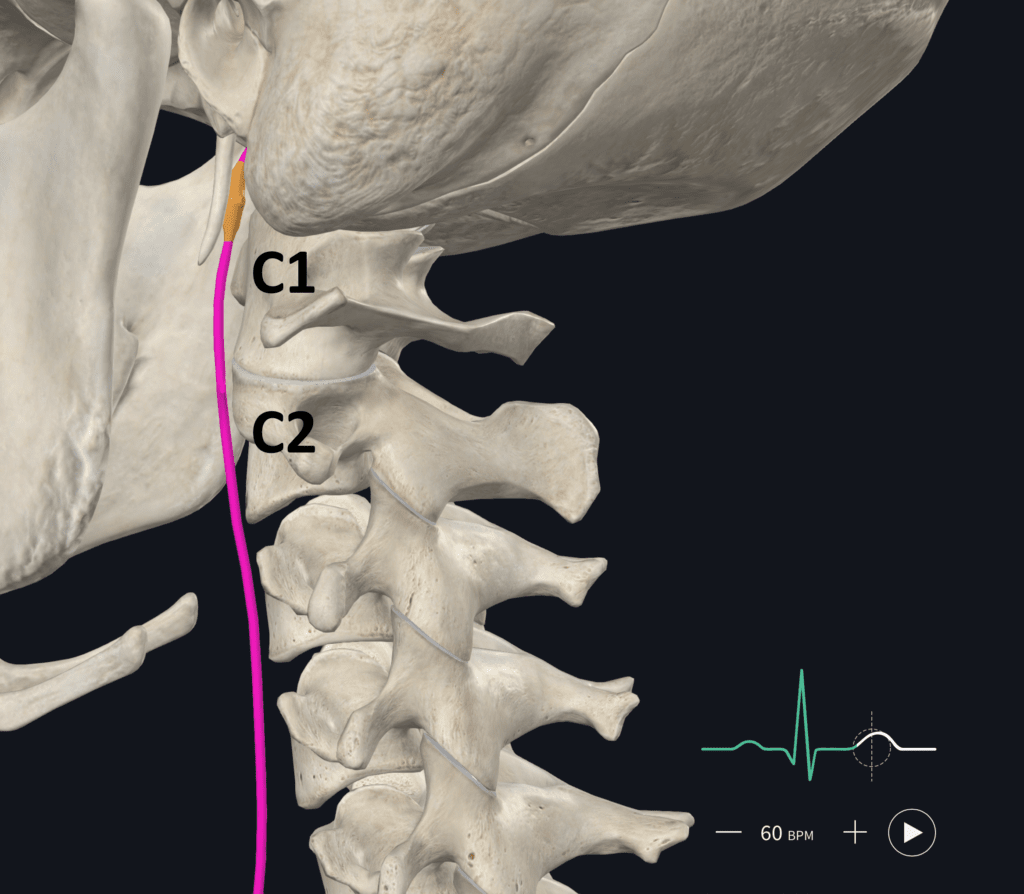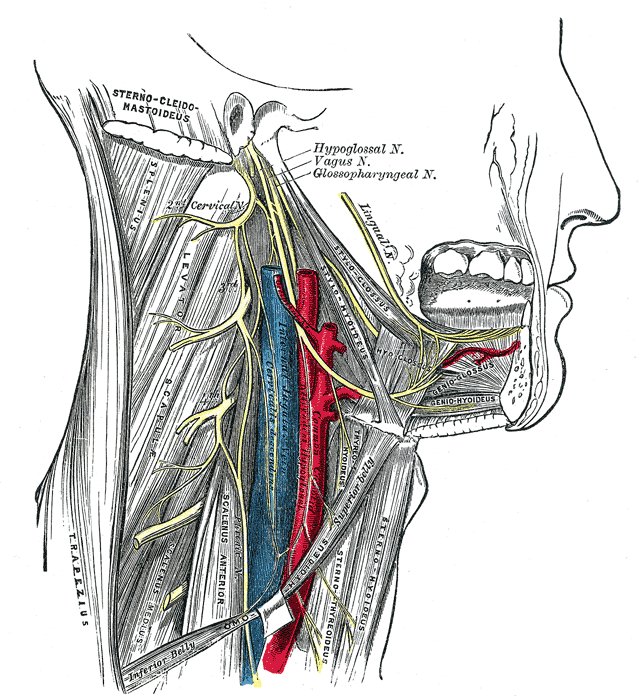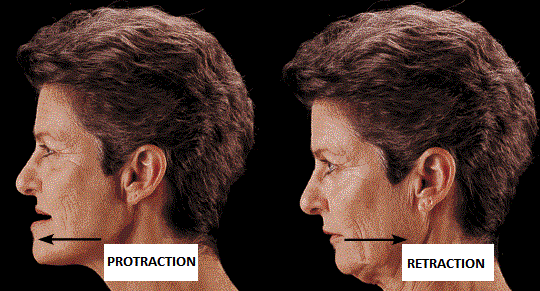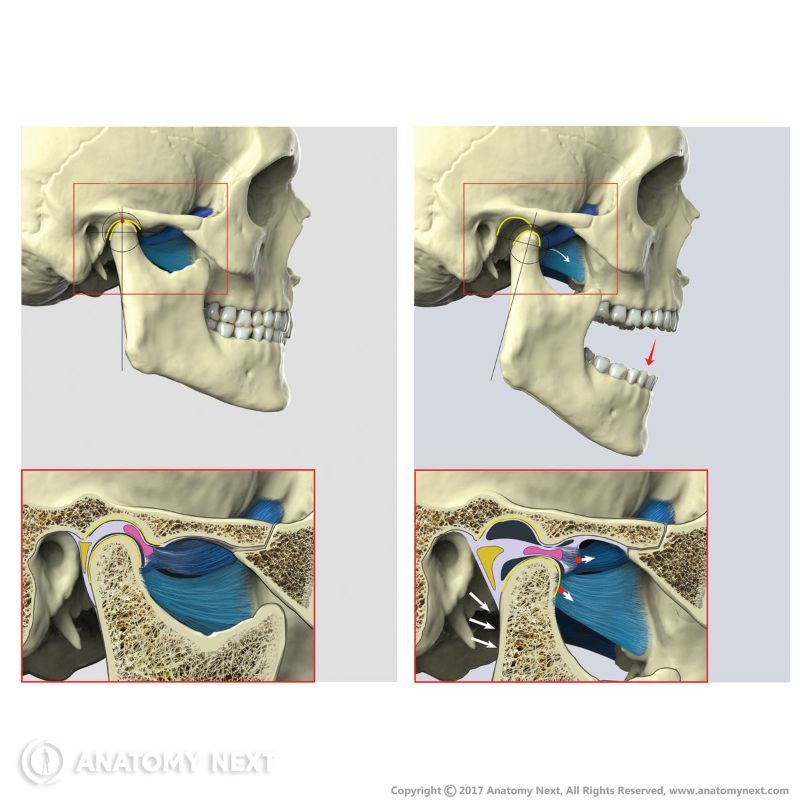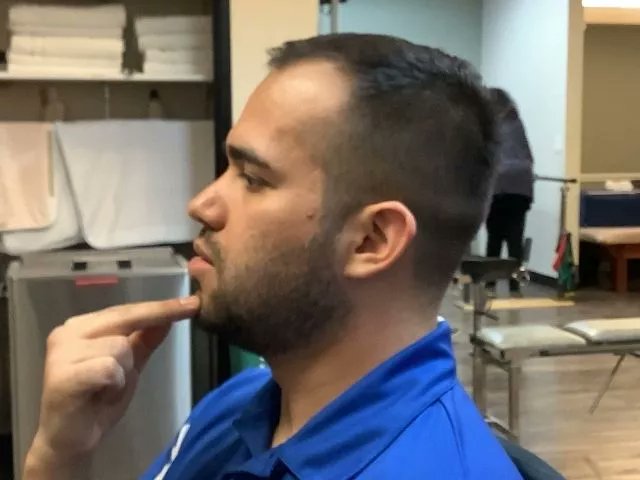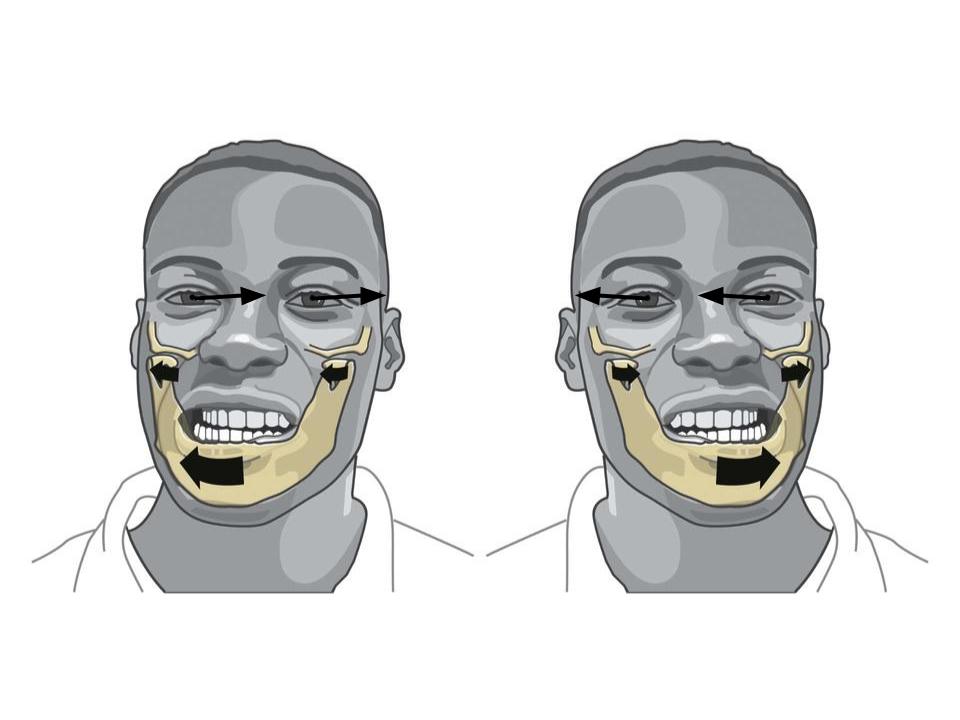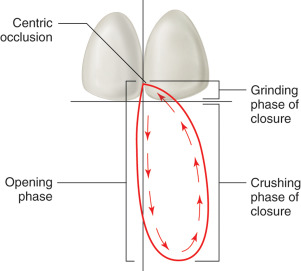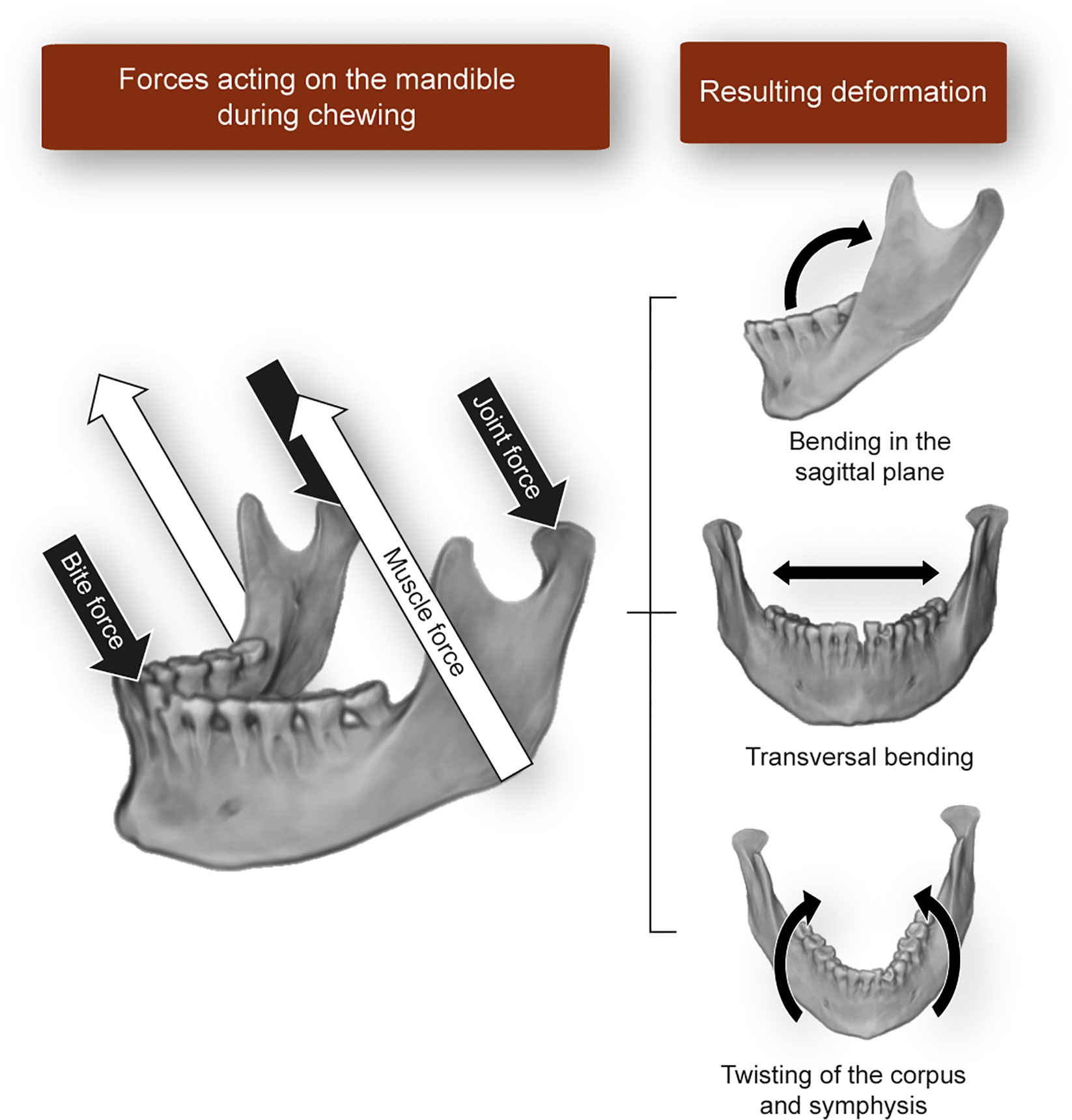Forgotten but not gone
The pterygoids are the forgotten muscles of mastication that, when dysfunctional, can cause problems at the jaw that spill over into the rest of the body. TMJD, facial pain, vertigo, tinnitus, dysautonomia, and postural issues (+more) can come from unhappy pterygoids.
Bound to the sphenoid
Named for their attachment to lateral pterygoid (“wing”) plate of the sphenoid bone, the pterygoids are broken into two separate muscles: the lateral and medial pterygoids. These muscles promote optimal jaw mechanics and greatly influence the position/motion of the sphenoid bone.
Protractors
The medial pterygoids protract and elevate the jaw, helping to close it shut. The lateral pterygoids protract and depress the jaw, causing it to open. Protraction is important because it prevents the mandible from pressing too far backward into the glenoid fossa.
Unilateral coordination
Unilaterally, the pterygoids on the same side contract, causing the jaw to shift and tilt to the other side. This is necessary during chewing, as it helps to rotate and turn food within the mouth, improving the ability to grind it down into smaller pieces.
Oculomandibular connections
The same motion happens to a smaller degree as you walk and when your gaze shifts laterally. The pterygoids on one side activate as the gaze moves to that same side, causing the jaw to then translate to the opposite side. This connection is known as oculomandibular synkinesis.
Influence on the sphenoid
The pterygoids will end up contributing to the sphenoid's motility. Unilateral contractions, cause torsion to one side, while bilateral tone affects flexion/extension. Asymmetries or insufficiency in the pterygoids can alter the craniosacral pump and the shape of the face/spine.
Changes to the face
Dysfunction will ultimately be reflected by malocclusion. This can be asymmetric or lead to an overbite/recessed jaw. Altered mechanics can then cause the mandible to be jammed back into the skull. In time, this can induce wear on the joint, causing further pain and dysfunction.
Nerve compression
The trigeminal and vagus nerves (parasympathetic) can become irritated should the jaw exist in excessive retraction. Conditions such as Tourette’s, vertigo, Meniere’s, tinnitus, pain in the face, and dysautonomia may also be related to issues with the pterygoids.
The importance of the pterygoids
Given the staggering amounts of influence these muscles can have, it is important to ensure they are healthy and able to relax and contract as needed. This can be approached via long-term postural habits as well as exercises, both direct and indirect.
Vascular compression
The carotid arteries and lymph vessels that pass through the region can become compressed by the mandible. Restricting blood and lymph to the brain, face, and scalp as well as important organs such as the thyroid will limit metabolism in these areas.
Prolonged protraction
At rest, the mandible should exist in a slightly protracted position with the teeth gently touching at all points. You do not need to give yourself an underbite but enough to provide space to for optimal jaw mechanics, free of pain.
The yawn as a reset
The jaw is an ellipsoid joint, not purely a hinge. As it opens it is meant to swing forward, never backward. You can feel this for yourself as you open your mouth. A yawn is a natural reset mechanism for the jaw and can be done with this in mind.
Active protraction
Direct exercises to target the pterygoids include resisted protraction as you open or close your mouth. Place your fingers on your chin and gently push outward into your fingers as you open/close. Very little resistance is required and the movement should be done slowly.
Unilateral exercise
Unilateral exercises for the pterygoids center around shifting/tilting the jaw to one side, almost at a 45 degree angle. This can be combined with lateral eye movements to the same side as the working muscles. If you look to the left the jaw will tilt to the right and vice versa.
Chewing
Chewing will naturally utilize the muscles in all three planes of movement. It is also innate and can produce the most benefits due to the ease of repetition. Chew with each side of your mouth and focus on protracting/rotating comfortably.
Be gentle
Never try to push past pain during any of these exercises. The structures in and around the jaw are vital and should be treated with respect and care. If these muscles are in need of rehabilitation then the process should be taken slowly and with care instead of with brute force.
